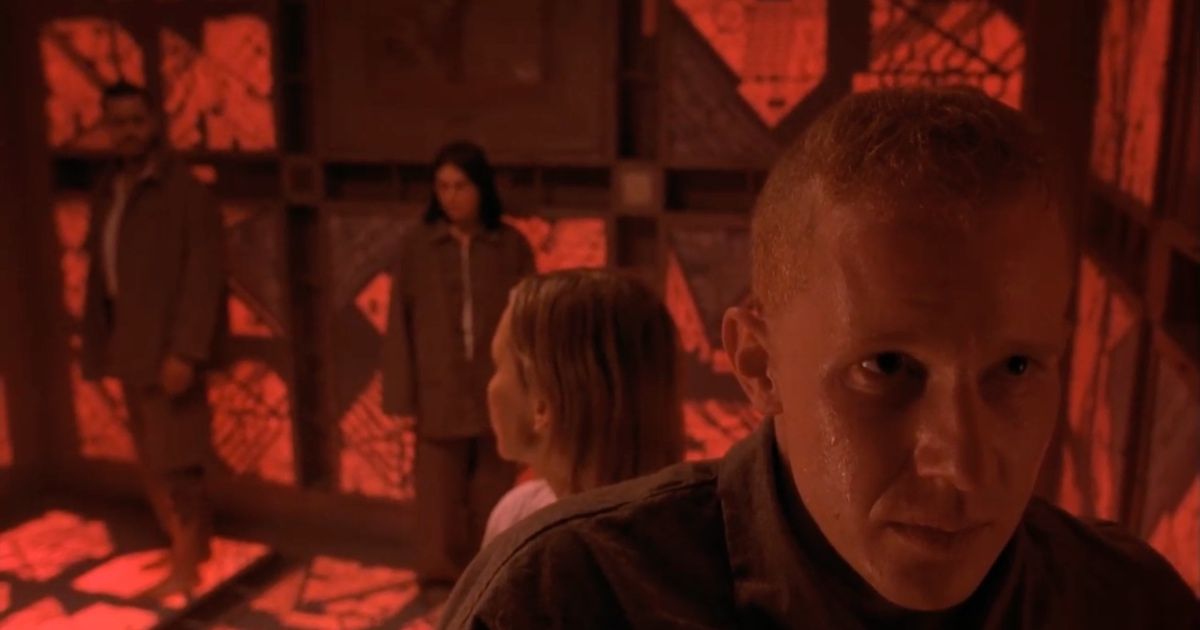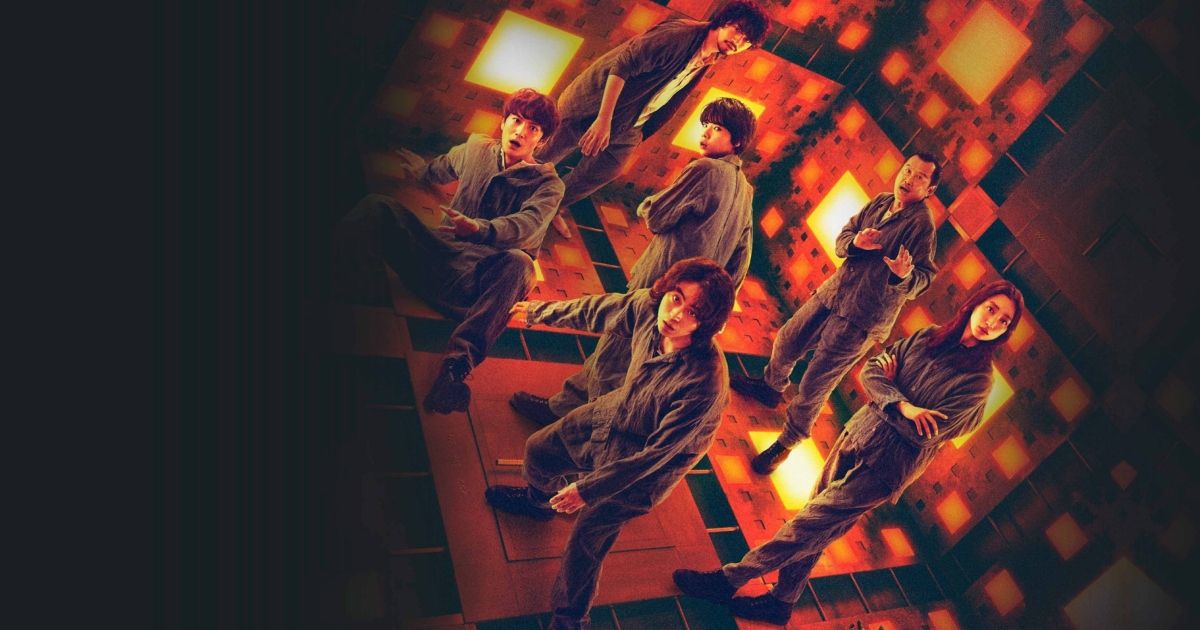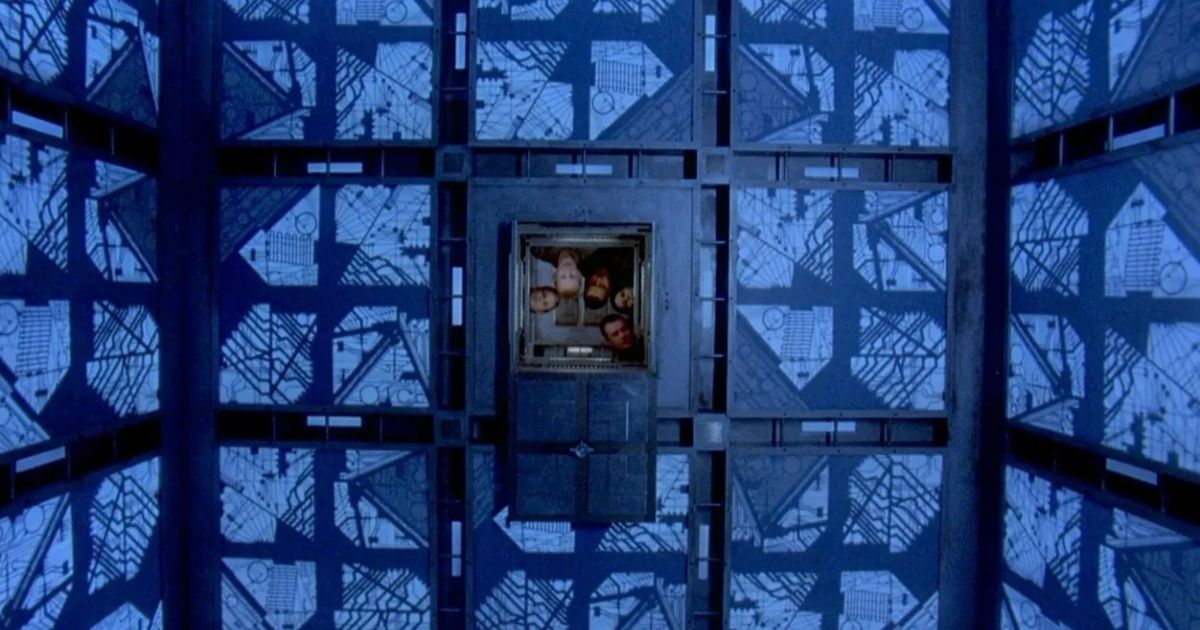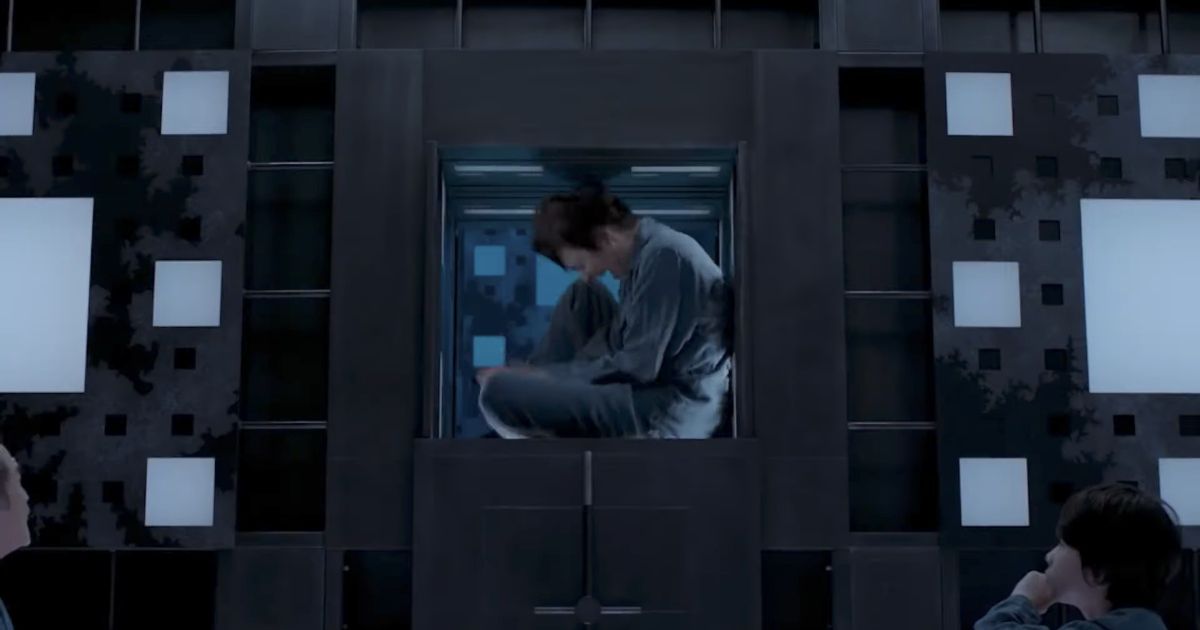You wake up. You’re not really sure what you’re doing here, or where ‘here’ even is, but it seems complicated. You have to make myriad meticulous choices to navigate from one moment to the next, to get from ‘here’ to ‘there.’ It’s hard to tell what a good choice is, aside from the fact that it doesn’t kill you. You meet others, wearing similar skin suits, equally lost; some are more ready to admit it than others, and some have intricate ideas about where you are and why you’re both here. You’ll stick with some of them. Others will die, or go their separate ways. In fact, you’ll all die, basically. You were given a death sentence when you woke up, and everything around you has an expiration date, except, perhaps, for this ceaseless place, this indifferent Rubik’s cube of shifting possibilities called life.
This is the plot of Cube, more or less, and it’s the situation that every human being has found themselves in throughout history. Existence is dangerous, and no one gets out alive. Nobody knows why they’re here or where they’re going, not for certain; there are the knights of faith and hedonist humbugs, sure, the ones who either think they’ve got it all figured out or that there’s nothing to figure out, and that’s just fine. That’s not certainty, though it can be a fine hedged bet against meaninglessness.
The German philosopher Martin Heidegger had an ontological term for existence, Geworfenheit, which roughly translates to “thrownness.” We are thrown into existence, attached with arbitrary traits and conditions, and very few films have encapsulated this disorienting yet universal ontic state like Cube. Filmmaker Vincenzo Natali premiered the sci-fi / horror masterpiece just more than 25 years ago at the Toronto International Film Festival, and now it has been remade into a uniquely Japanese Cube which nonetheless meditates upon similar philosophical questions as the original.
In honor of Cube passing that milestone anniversary and the release of director Yasuhiko Shimizu’s new version on Screambox, Natali spoke with MovieWeb about the remake of his own film, and revisited the original with a rich career of hindsight.
Yasuhiko Shimizu Remakes Cube
Cube is a fascinating film to remake, considering that it’s very minimalistic and would seemingly not leave room for much variation. Strangers awaken in a cube with a door on each wall; every door leads to another cubed room in a seemingly endless maze, although some of them are tricked out with deadly traps in a variety of gruesome ways. Nobody knows how they got there, who brought them there, or what the point of being there is, other than to die.
While the traps and lighting differs, the cubes are fundamentally the same. Everyone wears the same sort of industrial uniform. The mystery, ambiguity, paranoia, and mistrust is the same between each version of Cube. It’s the same basic plot — some characters in search of an exit. In a way, though, remaking such a sparse film reveals the bare essence of the Japanese cast and crew creating it.
“I like what they did, and it was just such an interesting thing to see it pass through that cultural filter,” said Natalii. “So I think there was a Japanese influence to begin with, but what’s striking about the Japanese version is that it is so much about generational differences. And I mean, that’s the core of it, which is not really something that I feel is happening here in the West. I think it’s very specific to Japan, is this population ages, and the young are burdened with caring for the old, so it’s very specific to not only Japan but this moment in Japan.”
Cube Is Vincenzo Natali’s Baby
“When I was making the original film,” continued Natali, “I thought, this is going to play well in two countries: Japan and Russia. Like, I think these are the two cultures that will understand this movie, which is certainly the case in Japan. I don’t know as much about Russia, how it was received there, but Japan always was the first and, next to the French, the most aggressively Cube-loving country out there […] I would name different cubes depending on the style I was using, and there was an Ozu cube, where I was shooting it like in an Ozu movie. So it was already impregnated with them.”
“Impregnated” is an interesting word to use. Natali’s Cube is all grown up, and the director has gone on to helm a variety of incredible films and series (the brilliant Nothing, Splice, Cypher, Haunter, and episodes of Westworld and The Periphery), but it was his first feature film and holds a special place for him. One imagines Natali reconnecting with an acquaintance at a grocery store who pulls out a picture of a cild from their wallet, and Natali does the same, pulling out a small photograph of Cube with pride.
“I’ll never get tired of talking about Cube. I mean, it’s my baby,” gushed Natali, “it was my first baby, the firstborn. And it was such a miracle that the film was made. At the time, which was 25 plus years ago, it was a hard film to convince people to make, because there weren’t a lot of single-setting movies out there. I consistently would get the reaction that, ‘Oh, this is a short film. It’s not a movie.’ And it really was through the auspices of the Canadian Film Center that it was able to become a reality, and I think only in that way. So it was a miracle, and yeah, I don’t take miracles lightly.”
Natali Embraced a Japanese Remake of Cube
Natali trusted and respected the Japanese filmmakers to create their vision of Cube. Director Yasuhiko Shimizu creates a more emotional, protagonist-centered journey (with a dramatic Masaki Suda at the center) from a script by Kôji Tokuo. “I had a very light touch. I kind of wanted to stay out of the way,” explained Natali. “Whatever a remake is, it should define itself apart from the original, and I really didn’t want it to be the original.”
Natali continued:
I’ve never been enthusiastic about an American remake, because I just always felt like, well, it’s gonna be the same thing. Except they probably won’t have as much freedom, so that won’t be as interesting, it would just be slicker. Whereas with the Japanese one, I felt like they can’t help themselves, even if they tried they would never be able to do the first one over. And I think even though it is rather close, closer than I imagined it would be, it’s still obviously very, very distinct. And it’s another time, too. I mean, we’re living in a very different time.
In fact, it’s the cultural distinctions between the two which creates specificity (and also ironically universalizes the metaphysics of Cube). “They were considering using an American director, which I opposed, because I just I desperately wanted it to be thoroughly Japanese. And they had their reasons, but that didn’t work out. So I was really happy when we got to Yasuhiko Shimizu. I really, really liked his previous film, Vise, which is very interesting, but a very disturbing, strange film. Very poetic. And I went, ‘Oh, yeah, this guy’s gonna be great.’ And he did really wonderful things.”
The Universal Labyrinth
It’s the cultural distinctions between the two versions of Cube which creates specificity (and also ironically universalizes the metaphysics of Cube). Vincenzo Natali’s film may seem uniquely reflective of the ’90s and Gen X angst (“I was in my 20s, I was in the nihilistic stage of my life,” laughed Natali), and Shimizu’s may seem specifically indicative of the generational conflict of today, but the whole idea of Cube is timeless. It’s humanity’s eternal interrogation of its own existence, with fear and trembling. It’s Sartre’s 1944 play No Exit as much as it’s Sophocles’s 450 BC tragedy The Trachiniae. Cube is life.
“I always describe the writing process that I did with André Bijelic, my lifelong friend, and Graeme Manson, ultimately as kind of form of archeology, in so much as it felt like we were, as opposed to actually creating something or writing something, it sort of felt like we were unearthing something that had been buried in the sands of time, and that already existed,” explained Natali. “We were, in our own stupid ways, rediscovering what Cartesian space is, these basic mathematical concepts we probably should have been paying attention to in high school.” He continued:
But it was more than that. I think it’s the primal nature of that conceit, and the fact that it is without context, or very, very little context, naturally sets it to become an allegory of some kind. In either film, you can superimpose meaning onto it, your own meaning. But ultimately, because it’s so simple and basic, it does sort of become a metaphor for life. You’re dropped into this world, and you don’t really know anything about it. No one does. And you have to find your way, and in your path, you will meet other people and you have to decide if you should work together or work apart, or fight each other. What does it take to get to the end of the maze?
“I think that’s just something, even though this is in a science-fictional kind of context, it’s something that really has its seeds in ancient mythology,” said Natali. “I was always a great lover of Greek myth, and the labyrinth. Because the conceit of the labyrinth is really ancient, so this is just a retake on that very basic concept.”
The Rooms of My Cube
Cube invites viewers to superimpose their own meaning across it, the same way the actual, physical cube of the film pushes its inhabitants to consider what it means, and the same way that a remake is itself a superimposition of meaning upon a pre-existing thing. It’s all about meaning (its presence and its absence, its horror and its necessity), and we are meaning-making machines. Maybe that’s why Cube has stood the test of time over decades and across countries.
I was a teenager when I first saw Cube. I scheduled to record it on a VHS; it was playing on The Sci-Fi Channel (now Syfy) while I was at school. When I saw it, I was entranced, practically giddy. It depressed me, but there was a sweetness in that sadness because it felt true, it felt like a projector had emerged from my skull and was playing the feelings I could never express. I’ve seen it so many times that I’ve lost count, and have angered friends and lovers by pressing them to watch with me. I wanted to share it the way Natali had shared it with the world.
Cube and Groundhog Day are two of my favorite movies. Each are cleverly philosophical without being didactic, and both present the idea of being trapped in a repetitive structure with people you fear are just as empty and clueless as you. Both offer solace on lonely nights, or those days fresh out the mental hospital, and those nights I thought of returning. I’ve been through a lot of pain, because I’m stuck in this indifferent thing just like everybody else.
But Cube is a safe room, one of many I’ve been fortunate enough to find. Rooms where I feel at home and less alone. When I read someone like E.M. Cioran (“We have lost, being born, as much as we shall lose dying: Everything!” he writes in The Trouble with Being Born), I am not saddened — I’m in a safe room. When I listen to Leonard Cohen (“Ring the bells that still can ring, forget your perfect offering, there is a crack, a crack in everything, that’s how the light gets in,” he sings in Anthem), I’m in a well-lit room. When I watch and think of Cube, classic or contemporary, I come home. Furnish your cube with care.
Cube is now streaming on Screambox (available on iOS, Android, Prime Video, Roku, YouTube TV, Samsung, Comcast, Cox, and Screambox.com) and is also available on the VOD platforms Bloody Disgusting and Cinedigm.
Stay connected with us on social media platform for instant update click here to join our Twitter, & Facebook
We are now on Telegram. Click here to join our channel (@TechiUpdate) and stay updated with the latest Technology headlines.
For all the latest Education News Click Here




